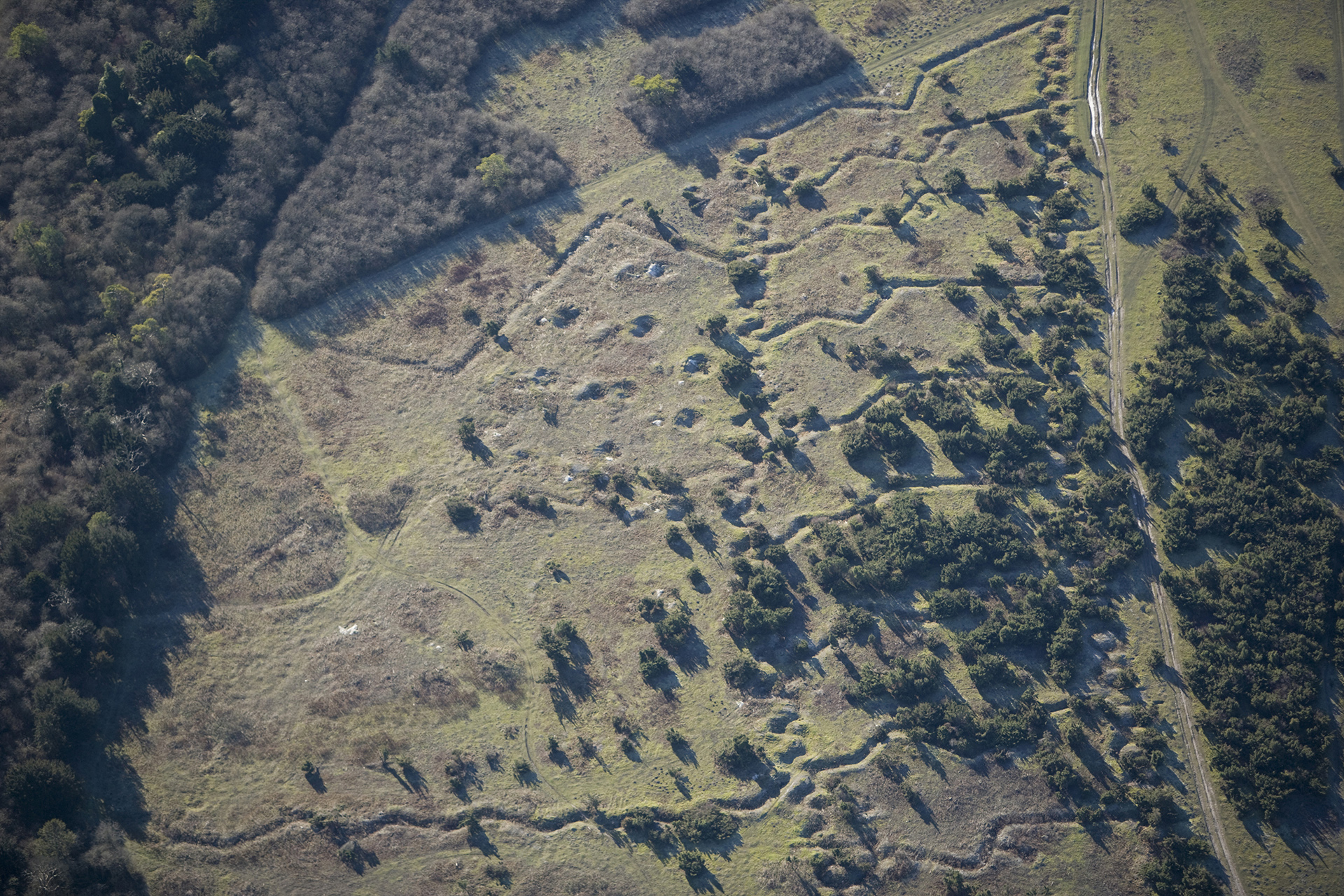First World War: Trench Warfare
Historic England has investigated fieldworks including defensive and practice trenches.
The most enduring images of the First World War are of the trenches of the Western Front. Less well-known are the extensive ‘practice’ trenches that were dug to train troops before they were sent to the Western Front and some may still be found across England. At the beginning of the war with the huge influx of recruits into the army, the digging of practice trenches was a means of imparting a valuable military skill to the volunteer soldier, building up men’s fitness and fostering team spirit.
Although often unrecorded in surviving records, many practice trenches survive as archaeological earthworks. A number, such as, those at Redmires Reservoir dug by the Sheffield Pals and those at Breary Banks, North Yorkshire, dug by the Leeds Pals, have close associations with locally raised units of friends and neighbours. Many of these went into action on the Somme in July 1916 and suffered heavy losses.
An archaeological survey within Old Oswestry hillfort in Shropshire, revealed the traces of a previously unknown set of training trenches.
Read the report: Old Oswestry, Selattyn and Gobowen, Shropshire: Analysis of Earthwork Report
Practice trench systems provided more realistic training, even for specific operations as at Bovington, Dorset where a German trench system was constructed to enable tanks to practice assault tactics.
To date, examples at Short Fell, Northumberland, and the earthwork model training trenches at the vast training camp at Cannock Chase, Staffordshire, have been listed. It is also at Cannock Chase that a scale training replica of the Messines Ridge – site of a major battle in Belgium where the Germans were defeated in 1917 – has been excavated.
Historic England has undertaken a detailed photographic study of this, with images publically accessible at the Historic England Archive in Swindon.
Historic England also commissioned Martin Brown, Principal Archaeologist at WYG consultants, to produce a thematic report on First World War Fieldworks in England to give us a better understanding of the archaeological resource in a national context. It promotes protection through discovery and the identification of the most significant remains.
You can also see a gazetteer of the known First World War fieldworks below.
-
First World War: Land
One of the features of industrialised, mechanised, 20th-century warfare was its hunger for land.
-
First World War: Sea
At the outbreak of the First World War Great Britain was the world’s greatest naval power.
-
First World War: Air
Historic England has identified the most significant airfields and airfield buildings of the First World War.





